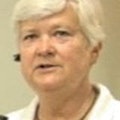It has long been suspected that there's a link between firefighting and cancer.
On Thursday, two agencies announced they are joining forces to study the issue to determine if there is an increased risk by firefighters for certain cancers.
The U.S. Fire Administration and NIOSH are conducting the probe to see if exposure to chemicals, smoke, soot and other substances the firefighters come into contact with increase the likelihood of developing cancer.
"We are pleased to hear about the study. I am hopeful there will be a better understanding of firefighters and their potential for cancer," said Mike Dubron, founder and president of Firefighter Cancer Support Network.
Dubron said it is essential that firefighters use their PPE properly to protect themselves. He also pointed out the importance of screenings.
In addition to his organization - which lends support to cancer patients, their families and co-workers - the IAFF and IAFC wrote letters of support for the research study.
IAFC Safety, Health and Survival Section Chair Billy Goldfeder couldn't say enough about the importance of the study. "Cancer is a big issue for firefighters," he said. He added that in addition to carcinogens on the fire scene, crews are exposed to vehicle exhaust in their stations.
Information garnered in this project will be utlitzed to help protect responders, he said. Goldfeder, who is also the deputy chief of the Loveland-Symmes (Ohio) Fire Department, added that he is certain the research will dispute the Tri-Data report published last year that stated there was no link in cancer and firefighting.
"This study is a home run for us. And, I have no doubt it will prove that study was dead wrong. They were really off-scale in their comments... There are thousands of firefighters living with cancer now as well as many who are no longer with us."
Goldfeder said he's pleased the project has been funded, adding that it will make a difference across the country.
U.S. Fire Administrator Kelvin Cochran said his agency is poised to lend a hand.
"There is a need to have a comprehensive study of the incidence of cancer in the fire service involving objective medical and epidemiological oversight. We have lost too many firefighters from this disease," Cochran said in a prepared statement.
This multi-year, USFA supported NIOSH study will include more than 18,000 current and retired career firefighters. The project will improve upon previously published firefighter studies by significantly increasing the number of individuals for whom health data will be analyzed. A larger study provides greater statistical reliability, officials said in a statement announcing the project.
"The study will also improve on past studies by analyzing not only deaths from cancer, but also the incidence of certain cancers that have higher survival rates than others, such as testicular and prostate cancer, as well as deaths from causes other than cancer. This will improve researchers' ability to estimate risk for various cancers and to compare risk of cancer with risks for other causes of death," the announcement read.
"NIOSH has worked extensively with partners in the fire service to address occupational safety and health risks for firefighters," said NIOSH Director John Howard, M.D. "We appreciate the funding and support from the U.S. Fire Administration as we engage the scientifically complex question of firefighting and cancer risk."
Firefighters are exposed to smoke, soot, and fumes from fires that contain substances classified by NIOSH as potential occupational carcinogens or by the National Toxicology Program as known human carcinogens or substances reasonably anticipated to be human carcinogens. These may include byproducts of combustion such as polycyclic aromatic hydrocarbons, as well as contaminants from building products such as asbestos and formaldehyde.
By analyzing deaths and cancer cases among those firefighters, NIOSH will attempt to determine whether more cancers than expected occurred among the cohort as well as whether cancers are associated with exposures to the contaminants to which the firefighters may have been exposed.
About the Author
Susan Nicol
News Editor
Susan Nicol is the news editor for Firehouse.com. She is a life member and active with the Brunswick Volunteer Ambulance & Rescue Company, Oxford Fire Company and Brunswick Vol. Fire Co. Susie has been an EMT in Maryland since 1976. Susie is vice-president of the Frederick County Fire/Rescue Museum. She is on the executive committee of Frederick County Volunteer Fire and Rescue Association. She also is part of the Maryland Institute for Emergency Medical Services Systems (MIEMSS) Region II EMS Council. Susie is a board member of the American Trauma Society, Maryland Division. Prior to joining the Firehouse team, she was a staff writer for The Frederick News-Post, covering fire, law enforcement, court and legislative issues.
